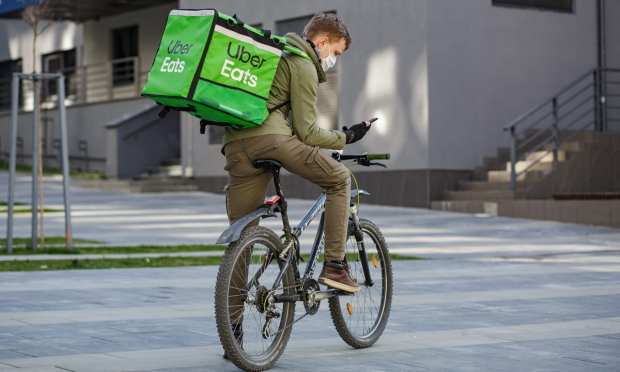Active Delivery Merchants For Uber Eats Surge 76 Pct YoY

Uber posted first-quarter earnings results showing that the pivot toward delivery seems to be firmly entrenched — but green shoots are showing for its core mobility business.
In terms of booking metrics, gross bookings were up 24 percent year on year to $19.5 billion. Mobility was seen hitting a new high of $6.8 billion, as reported in supplemental materials. Delivery gross bookings surged 166 percent to $12.5 billion. Revenue in that segment was $1.7 billion, up significantly year over year (at $527 million) and over the fourth quarter at $1.4 billion.
Total trips taken on the company’s platform were 1.5 billion, which was flat quarter over quarter, although 13 percent below last year’s first quarter. Monthly active platform customers (MAPC) stood at 98 million, down 5 percent year on year. Delivery MAPC surged 70 percent.
“On average, our monthly active platform consumers spent approximately $66 per month and used our platform approximately five times per month during the quarter ended March 31, 2021,” the company said in its earnings release.
The company also noted that gross bookings for its U4B (Uber for Business) were up 10 percent quarter over quarter.
“One question we’ve often been asked over the past few weeks is whether the mobility recovery has come at the expense of delivery demand,” Uber Chief Financial Officer Nelson Chai said on an earnings call. “So far, at a high level, the answer appears to be no.”
Active drivers and couriers on the platform reached 3.5 million, up 4 percent quarter over quarter but down 22 percent year over year. Management said on the call that ridesharing (particularly driver count) should rebound amid vaccinations.
Freight Revenues Up, Too
Freight revenues were up 52 percent year on year in constant currency to $302 million.
Merchant count on the delivery platform was 700,000 for Uber Eats in the quarter, up 76 percent.
Overall, Uber’s net loss was $108 million, a tremendous improvement from a $968 million loss in its fourth quarter. At least some of that loss, in the latest quarter, was offset by a $1.6 billion gain from the divestiture of the self-driving unit, ATG. It might be more useful, we note, to look at the operating loss, which came in at $1.5 billion.
The company’s loss was six cents a share, where analyst estimates had that line item at a loss of 54 cents. Revenues were lighter than estimates at $2.9 billion, where analysts had been looking for $3.3 billion.
Looking ahead, the company has guided that it will be positive on an adjusted EBITDA basis (a rough measure of cash flow) by the end of the year.
During the Q&A with analysts, when asked by about driver classification status (in the U.K., the company has to classify drivers as employees), management stated that independent workers tend to want to stay independent, and the key attractive feature of gig work is flexibility. The company continues to see driver shortages, according to management, although that is tied more to vehicle availability than anything else.
